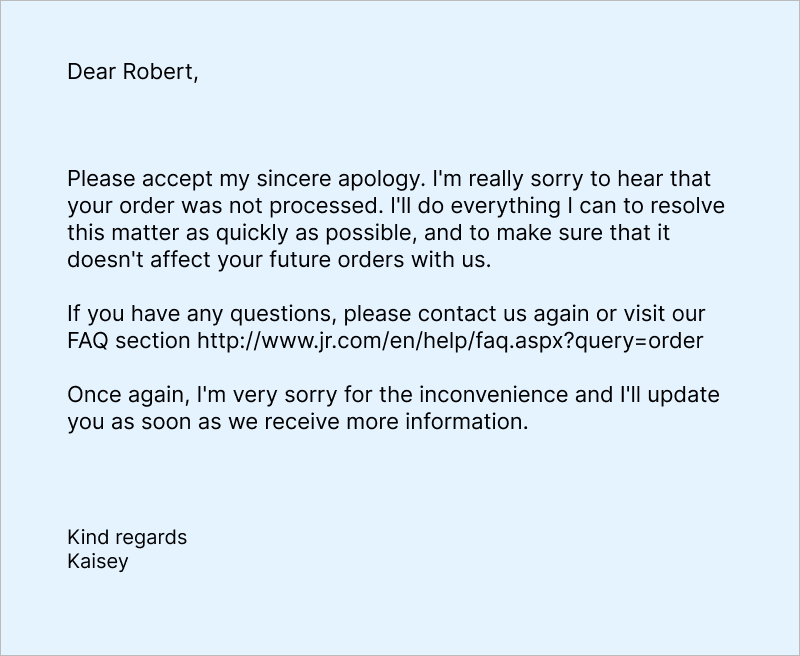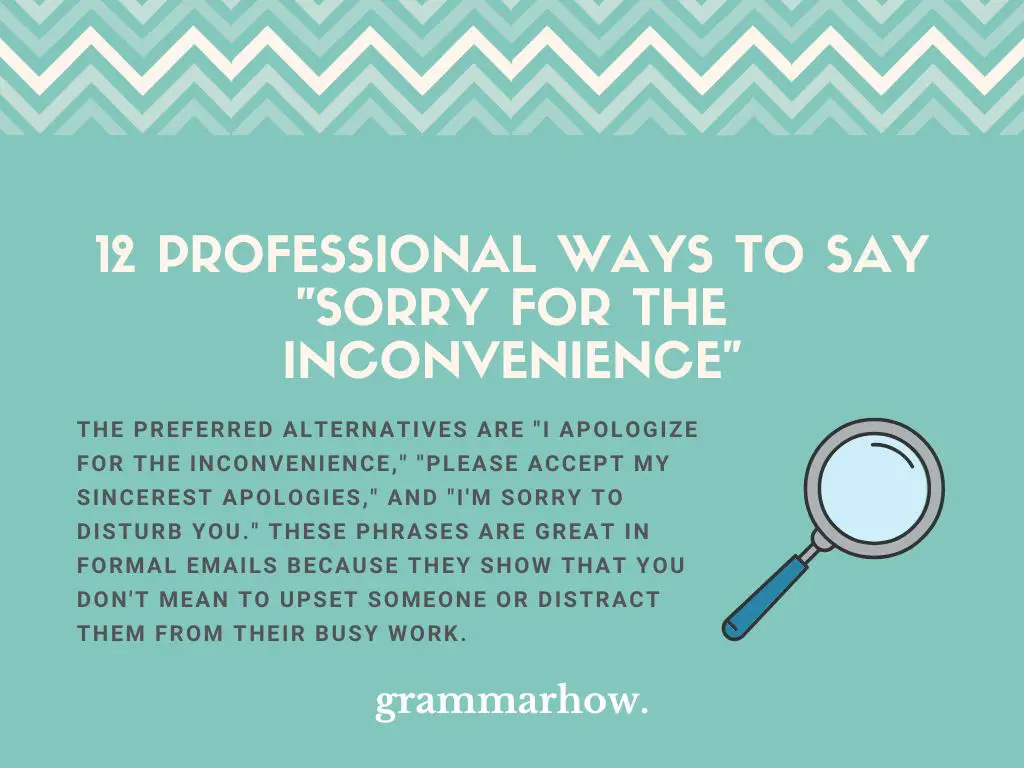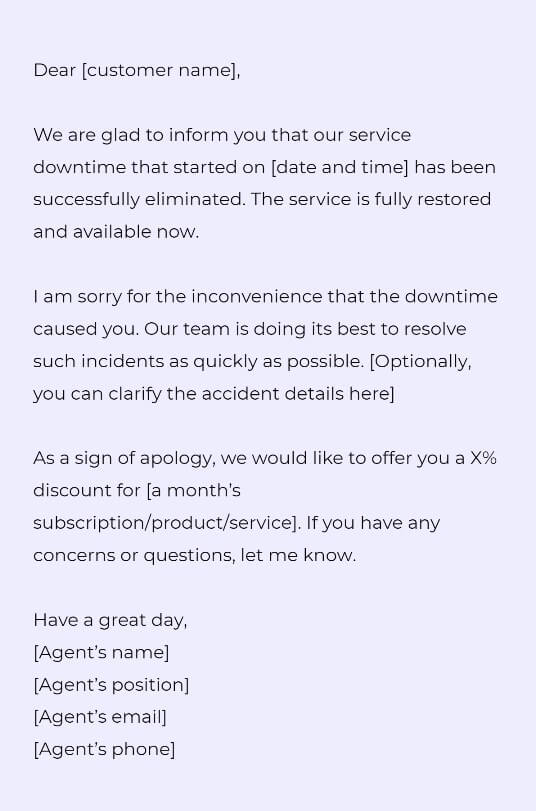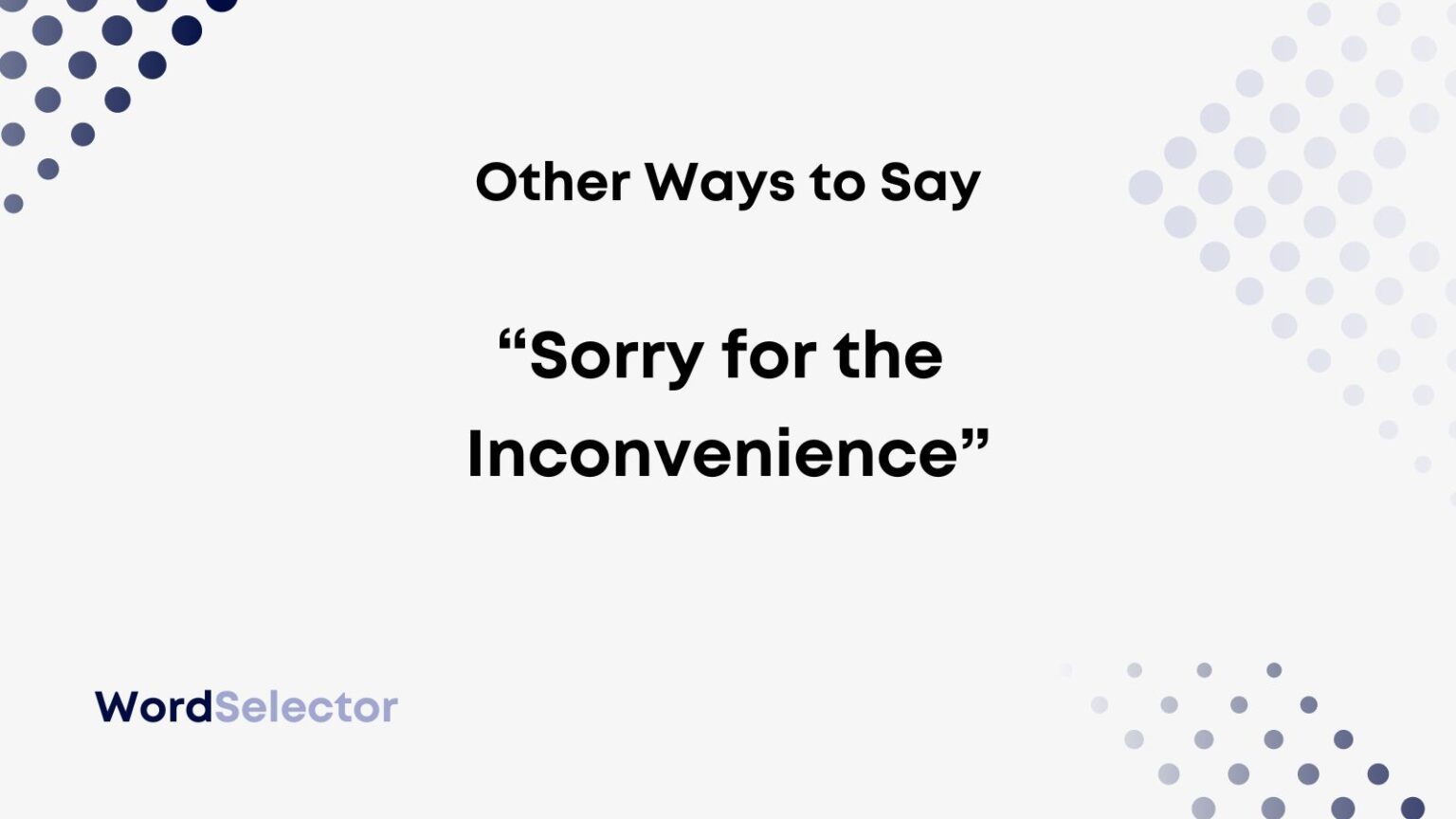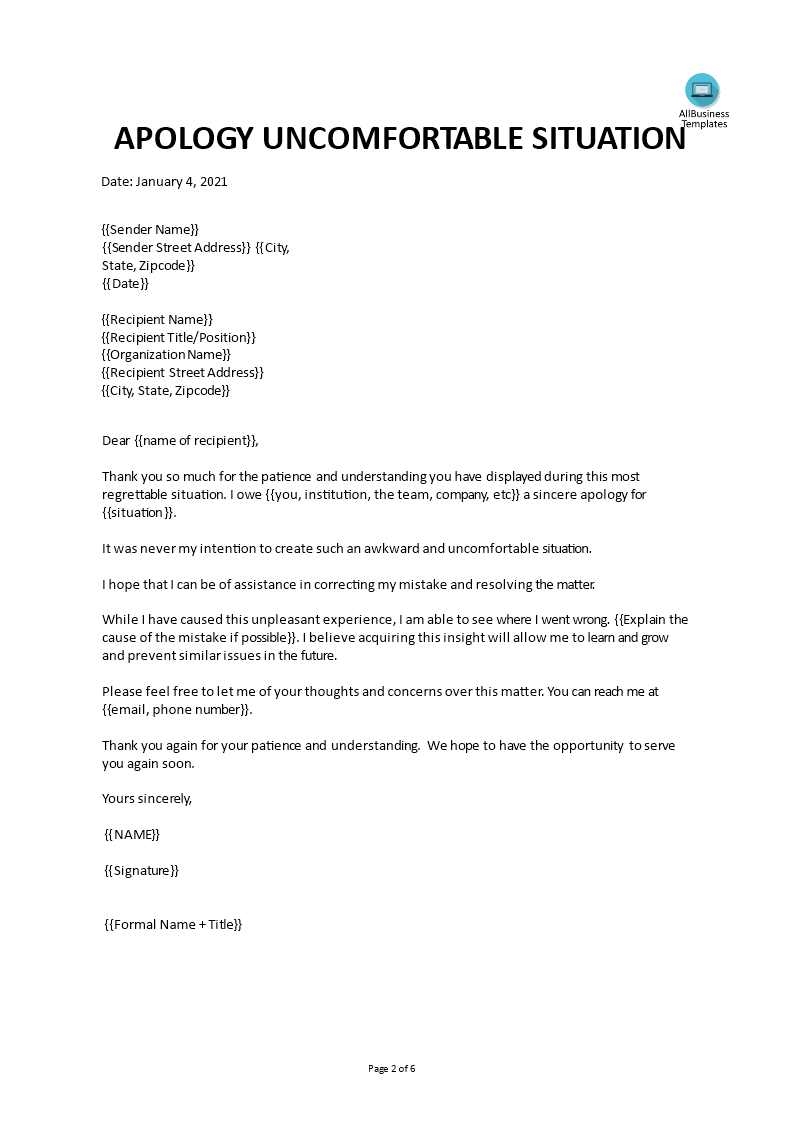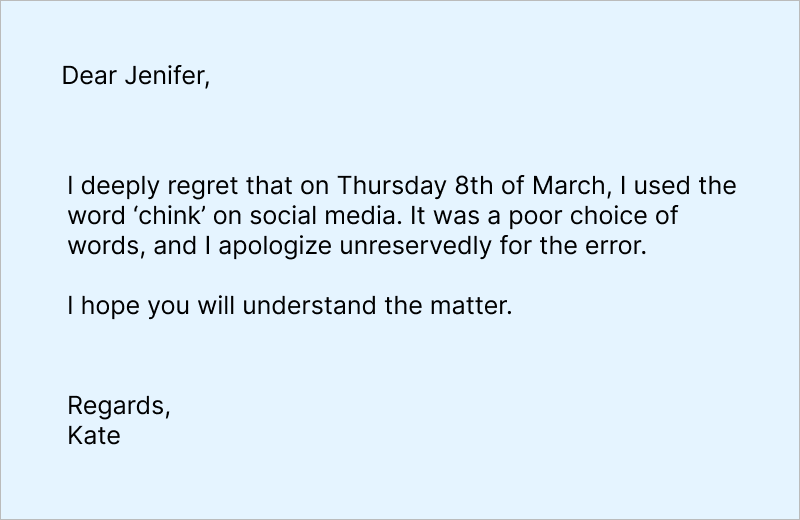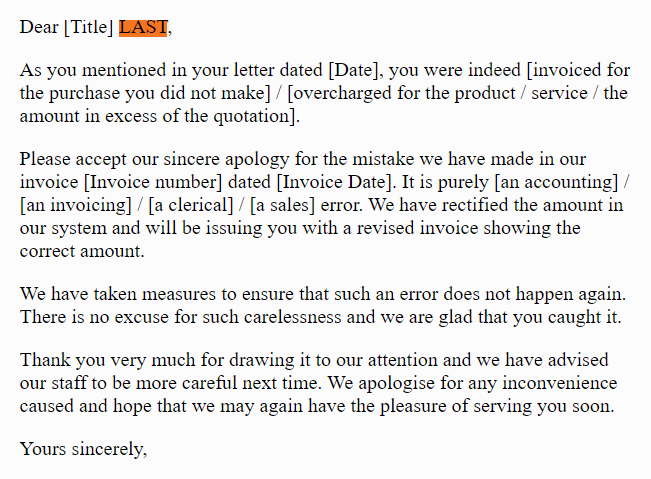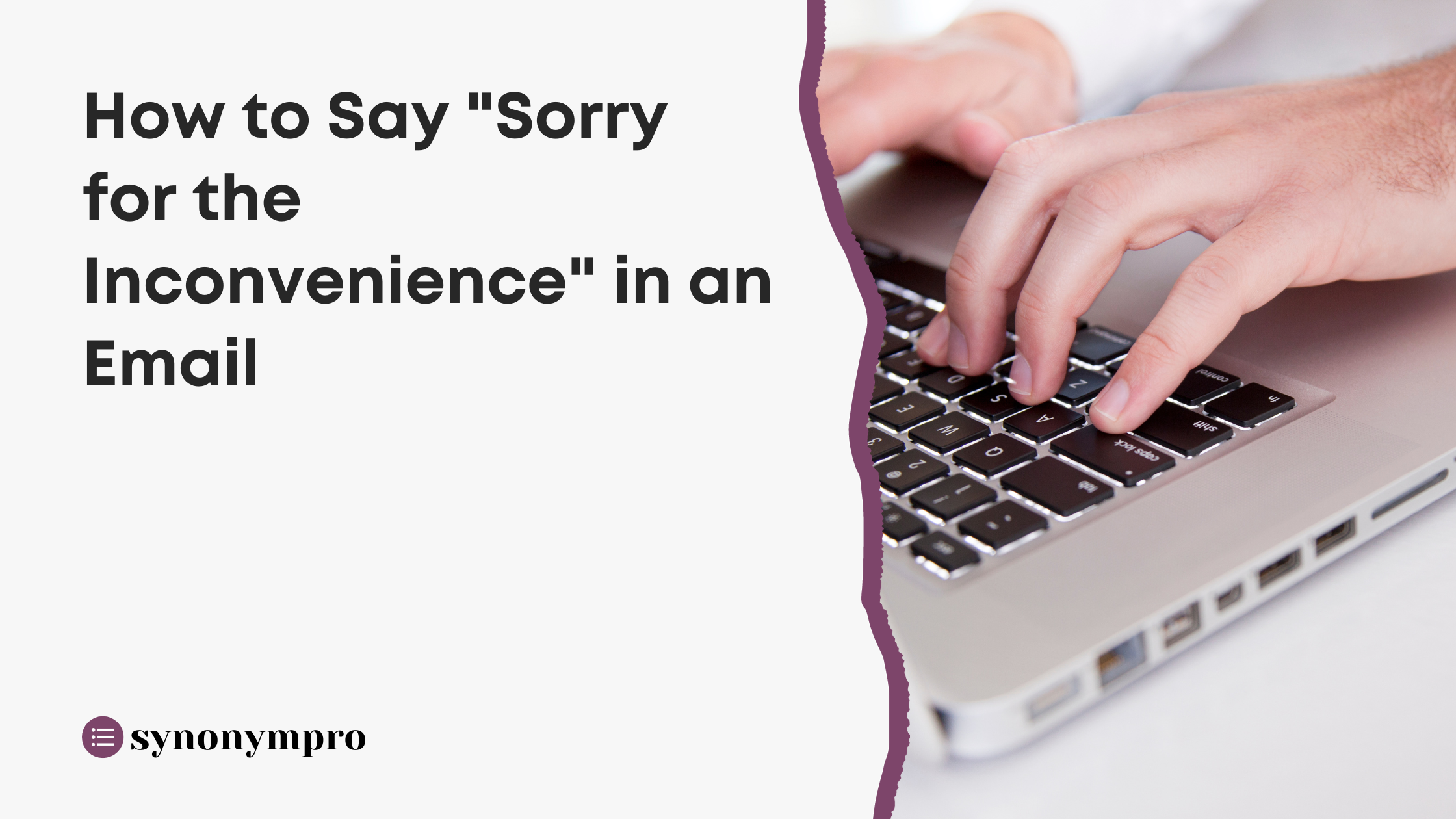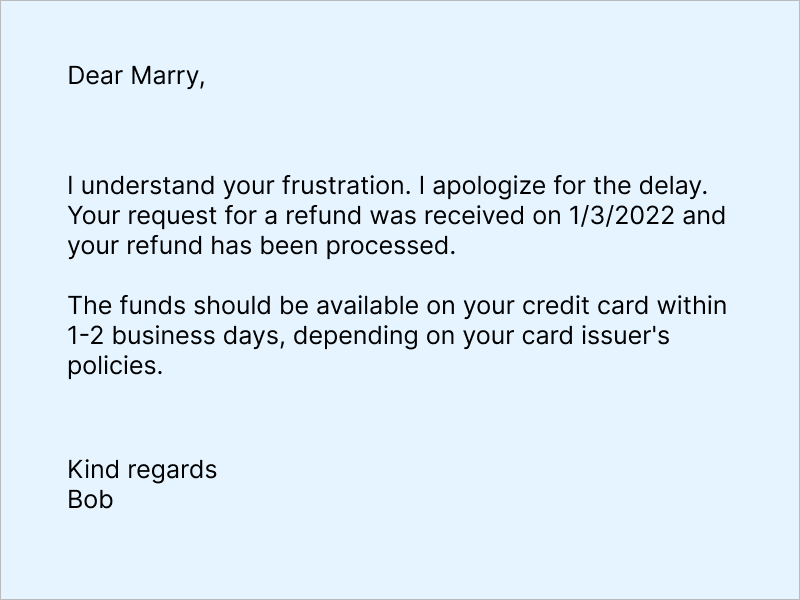How To Say Sorry For The Inconvenience
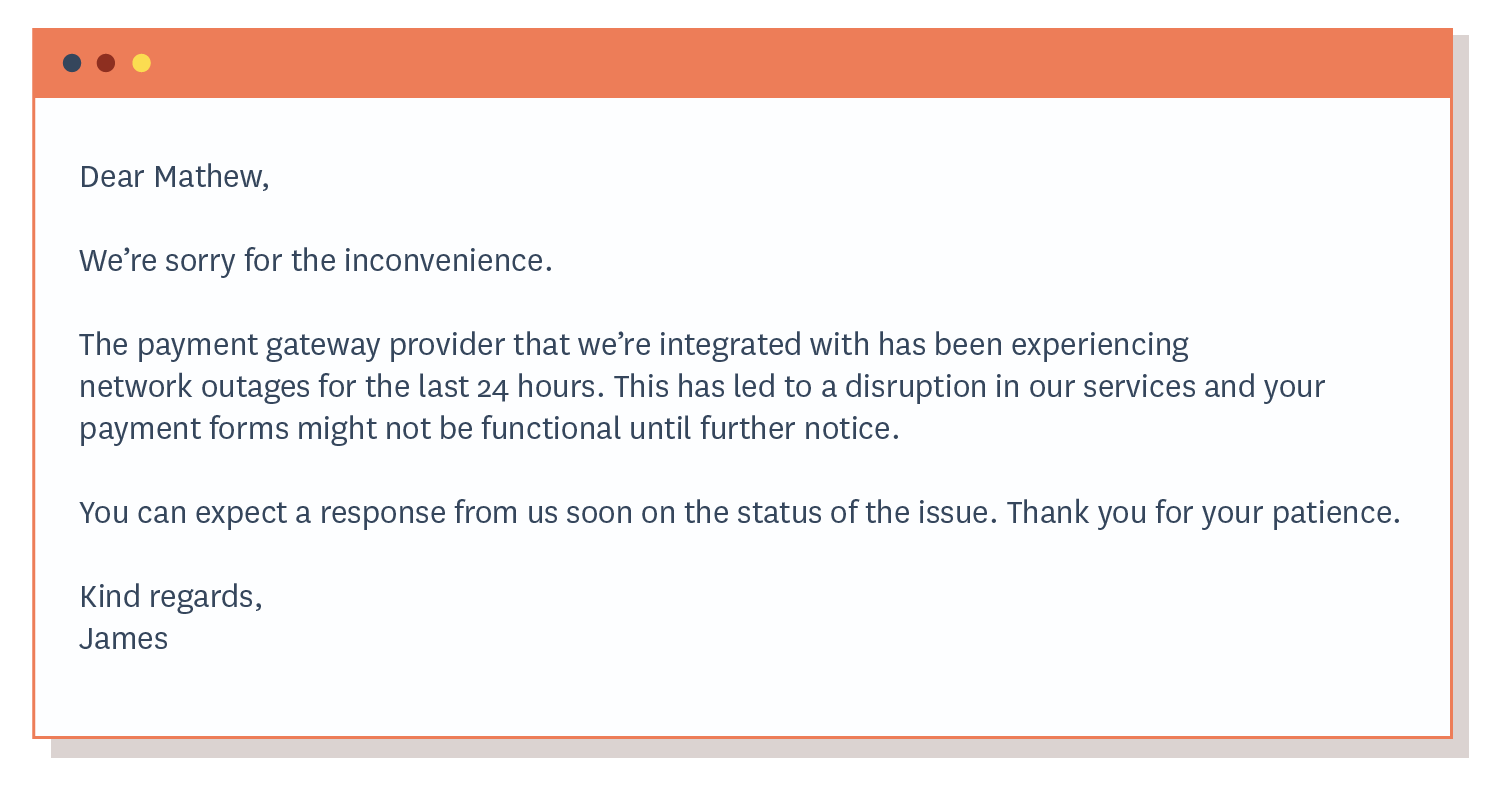
In an era defined by instant communication and heightened customer expectations, the art of the apology is often undervalued, yet critically important. A sincere and effective apology can salvage damaged relationships, rebuild trust, and mitigate potential fallout from errors or service disruptions. However, a poorly executed apology can exacerbate the situation, leading to further frustration and lasting negative perceptions.
This article delves into the nuances of crafting effective apologies, particularly in professional contexts where conveying sincerity and accountability are paramount. We'll explore the key components of a successful apology, analyze strategies for delivering them across various channels, and examine the long-term benefits of prioritizing genuine remorse and restorative action. Failing to address inconveniences effectively can have significant repercussions, impacting brand loyalty, employee morale, and ultimately, the bottom line.
The Anatomy of an Effective Apology
A robust apology isn't just about saying "sorry." It requires careful consideration and a structured approach. Experts emphasize that an effective apology comprises several essential elements, including acknowledging the mistake, expressing remorse, accepting responsibility, offering an explanation (without making excuses), and proposing a solution.
Acknowledging the mistake clearly and specifically demonstrates that you understand the impact of your actions. Vague or generalized apologies can come across as insincere and may fail to address the core concerns of the affected party. "We understand that the recent outage caused significant disruption to your workflow," is a stronger starting point than simply stating, "We apologize for any inconvenience."
Expressing remorse conveys genuine empathy for the affected individual or group. This element is crucial for demonstrating that you understand the emotional impact of the inconvenience. Phrases like, "We are truly sorry for the frustration this has caused," can effectively communicate your regret.
Accepting responsibility is arguably the most important element. Avoid shifting blame or making excuses, as this can further alienate the affected party. Take ownership of the mistake, even if others were involved. "We take full responsibility for the error that led to this issue," demonstrates accountability and builds trust.
Providing an explanation can help the affected party understand the root cause of the problem, but it's crucial to avoid making excuses. Focus on outlining the factors that contributed to the inconvenience without attempting to deflect blame. This can be a delicate balance, but transparency is generally appreciated.
Proposing a solution or offering compensation demonstrates a commitment to rectifying the situation and preventing future occurrences. This could involve offering a refund, providing a discount, implementing corrective measures, or simply committing to improved service. Offering concrete solutions reinforces your sincerity and reinforces trust.
Delivering the Apology: Choosing the Right Channel
The method of delivering an apology can be just as important as its content. The appropriate channel will depend on the severity of the inconvenience, the nature of the relationship with the affected party, and the urgency of the situation. A simple email might suffice for minor inconveniences, while a phone call or in-person meeting may be necessary for more serious issues.
For customer-facing scenarios, consider the impact of public apologies versus individual responses. A public apology on social media can address widespread concerns and demonstrate a commitment to transparency. However, it's also essential to follow up with individual customers who have been directly affected, providing personalized support and solutions.
Internal apologies, such as those delivered to employees or colleagues, require a different approach. Transparency and honesty are paramount, as is demonstrating a commitment to learning from mistakes. Open communication and a willingness to address concerns can help rebuild trust and maintain morale.
The Long-Term Benefits of Prioritizing Effective Apologies
Investing in effective apology strategies can yield significant long-term benefits. A sincere and well-executed apology can strengthen relationships, improve brand reputation, and reduce the risk of negative publicity or legal action. By demonstrating a commitment to accountability and customer satisfaction, organizations can cultivate loyalty and foster positive word-of-mouth referrals.
Furthermore, a culture that encourages and supports effective apologies can improve employee morale and create a more collaborative work environment. When employees feel empowered to acknowledge and address their mistakes, they are more likely to take ownership of their work and contribute to a culture of continuous improvement.
Looking Ahead: Continuous Improvement and Preventative Measures
Ultimately, the most effective strategy for managing inconveniences is to prevent them from occurring in the first place. By investing in quality control, process improvement, and employee training, organizations can minimize the likelihood of errors and service disruptions. Regularly soliciting feedback from customers and employees can provide valuable insights into potential areas for improvement.
Moreover, organizations should develop clear guidelines and protocols for handling complaints and delivering apologies. Equipping employees with the tools and resources they need to respond effectively to customer concerns can significantly improve the overall customer experience. Investing in training on communication skills, empathy, and conflict resolution can empower employees to handle difficult situations with grace and professionalism.
In conclusion, mastering the art of the apology is a critical skill for individuals and organizations alike. By understanding the key components of an effective apology, choosing the right channel for delivery, and prioritizing continuous improvement, we can transform inconveniences into opportunities to strengthen relationships, build trust, and enhance long-term success. Ignoring the power of a sincere apology is a risk no one can afford to take.
